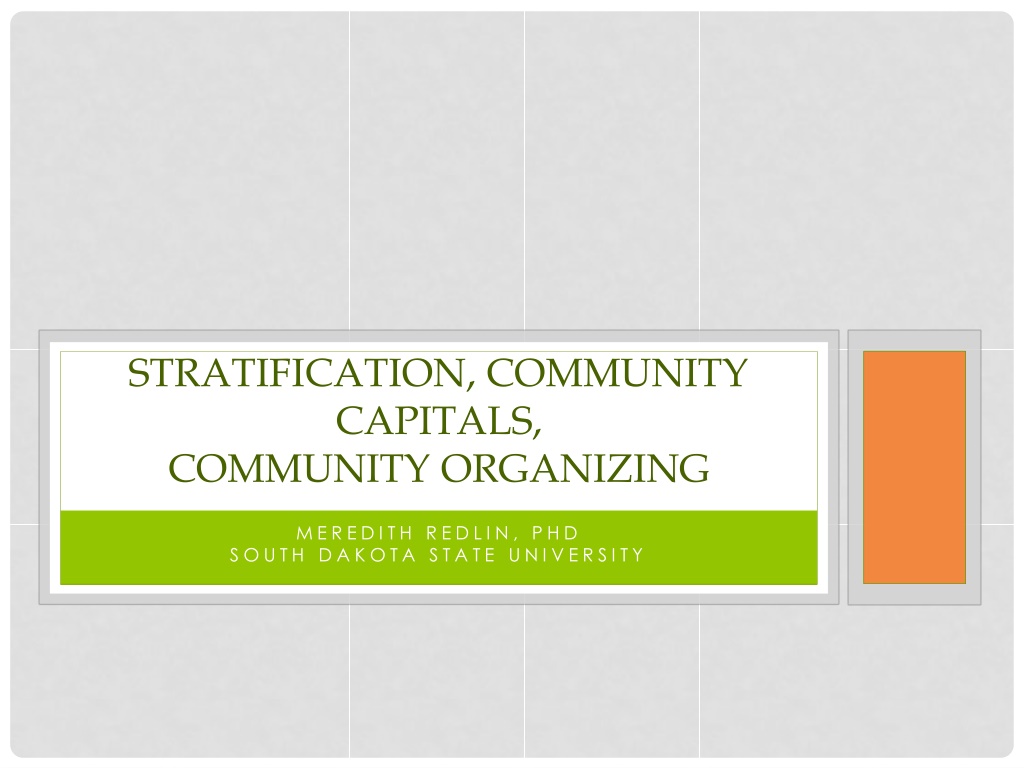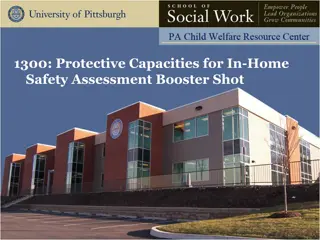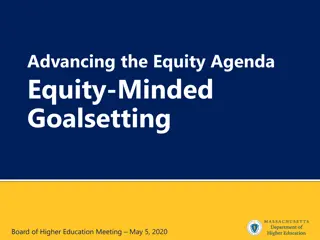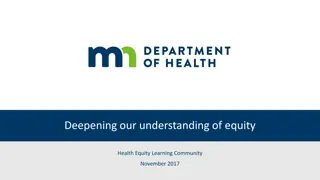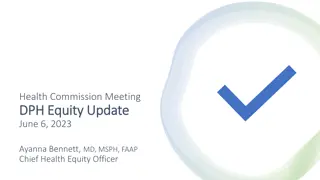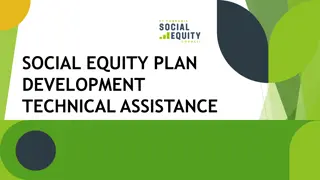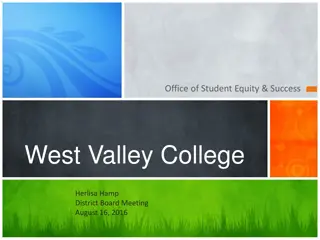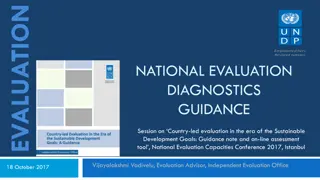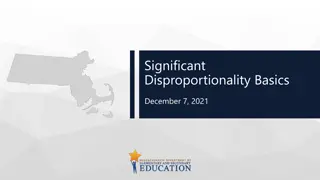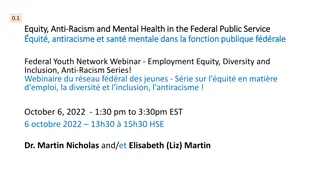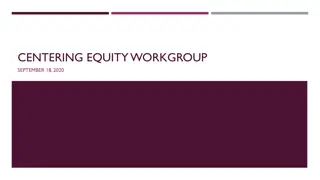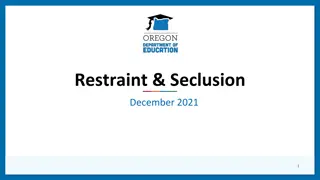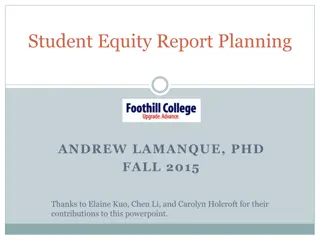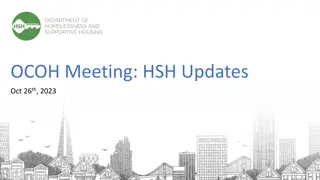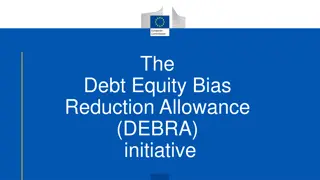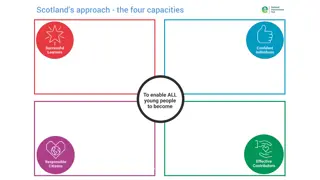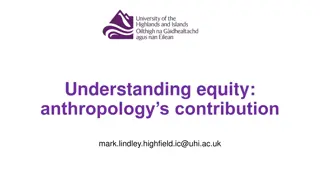Understanding Community Capacities and Striving for Equity
Exploring the dynamics of stratification, diversity, and capital assets in communities, emphasizing the importance of addressing inequalities. Implementation strategies such as community organizing and environmental group actions are discussed to promote sustainable development and social well-being through active engagement and collective action.
Download Presentation

Please find below an Image/Link to download the presentation.
The content on the website is provided AS IS for your information and personal use only. It may not be sold, licensed, or shared on other websites without obtaining consent from the author. Download presentation by click this link. If you encounter any issues during the download, it is possible that the publisher has removed the file from their server.
E N D
Presentation Transcript
STRATIFICATION, COMMUNITY CAPITALS, COMMUNITY ORGANIZING M E R E D I T H R E D L I N , P H D S O U T H D A K O T A S T A T E U N I V E R S I T Y
DIVERSITY AND STRATIFICATION Heterogeneity of population; Layers of society Changes life outcomes for individuals and groups through differing access to resources and power Culturally-based and temporal understandings which privilege some groups and dis-empower others Often larger than a community, but at the community level is where change and challenge can most effectively occur
Built Capital Financial Capital Natural Capital Political Capital Healthy Ecosystem Vital Economy Social Well-Being Cultural Capital Social Capital Human Capital
SPIRALING UP Capital assets as they exist (stock) Capital assets as they are invested (flow) Theory of cumulative causation: Loss brings loss of multiple capitals Success brings success and investment in many capitals Often results in severe inequalities across places Benefit of CCF: Systemic evaluation of a project s impacts beyond the direct achievement of objectives and goals. Captures increase in multiple areas of cumulative causation
Environmental Group Implementation 1. Research and policy development, which results in potential cacophony of experts 2. Lobbying and advocacy, which focuses on persuading elites and incremental wins 3. Community education, which doesn t necessarily prove that general knowledge leads to change in policy or behavior 4. Media and social media promulgation, which often results in mixed messages, and serves to dis-engage 5. Fundraising and recruitment, which may also simply reflect passive support. Community Organizing Implementation 1. A new theory of change, which can challenge existing power relations and set standards for appropriate and meaningful wins 2. (re)Learning the craft of facilitating people s interaction in place, building collective action, investment and follow- through 3. Organizational change such that all staff are knowledgeable and skilled in outreach 4. Humility and openness in the work, so that the process remains one of learning, inclusion and active engagement
CBNRM Community-based and focused Complex view of natural resource issues Socially and culturally embedded Action-based outcomes Inclusion and full engagement Sustainability as universal goal
CONDUCTING A STUDY OF CLIMATE CHANGE IN PLACE Identifying place People and life ways Historical , social and cultural context Issue WHO is having the problem? WHO isn t? WHY is it occurring? WHAT can be done? HOW can it be resolved?
Population: 700, Inupiaq Migratory stop for 15,000 years, permanent settlement for 200 years Unemployment listed as 14.5%, but skewed as 48.6% not counted Subsistence activities (fishing, netting, hunting, trapping, berry picking, whaling) encompass most of summer months combined with part-time winter employment
Key resources: moose and salmon Moose most important for hunting in last 20 years, as caribou migration route has moved north over 100 miles in that time. By 2004, great impact on moose population State governance and oversight through Fish and Game Department; Local governance through traditional leadership and collective decision- making
Event: Caribou habitat moves north Hunters turn to moose for subsistence Large carnivores also turn to moose Moose population collapses Traditional practices are impacted, limiting social and cultural capital Village well being is impacted Outfitting and other moose- related markets are negatively impacted
Traditions and sovereignty are stronger; economy improves Subsistence and other moose- related activities are revived Political capital and values related to sovereignty lead to policy development; Political capital leads to state adoption Traditional practices are implemented and TEK reinforced Moose population comes back Cultural capital provides the basis for advocating for change Social capital brings people together to address the issue
Salmon is primary food source; 60% of all dietary protein comes from salmon (Art Ivenoff, personal interview). Precipitous decline in salmon population in the last two decades. State and Federal governance through Magnuson-Stevens Act of US Congress and establishment of Northern Pacific Fishery Management Council (with 8 regional subcouncils) and Alaska State Department of Commerce 60% of appointed council members have direct financial interest in fisheries they manage; 100% of NPFMC have direct financial interest
Season is later and less salmon come Less opportunity to practice subsistence Villagers must search for alternative food sources Traditional giving to elders and those in need lessens Breaking down of traditional values and community cohesion Devaluing of TEK Village, family and individual well being is impacted Continuing decline of fisheries
UNDERSTANDING THE DIFFERENCE: DIVERSITY, STRATIFICATION AND CBNRM Diversity impact: Inupiaq people have the legal right as well as the institutional and financial ability to participate as equals in these decisions. Stratification impact: However, what is missing is frequently not the desire to act or even the resources, but the authority (Oakerson 2008:179). Structural levels for moose (local and state) allow for authoritative influence of indigenous knowledge and leadership and therefore, successful adaptation plan for Moose through CBNRM. Structural levels for salmon (federal, state and commercial) precludes local or noncommercial authority, therefore limiting adaptation planning and CBNRM for salmon.
